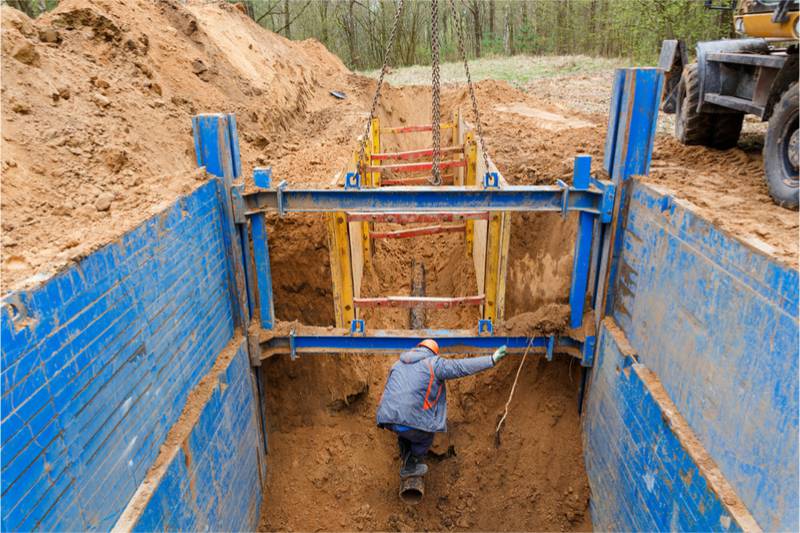OSHA has determined that there are four main safety hazards, excluding transportation incidents, that account for a majority of all construction worker deaths each year on the jobsite. Dubbed the “Fatal Four” by OSHA, they include falls, electrocutions, being struck by objects, and getting caught in or between hazards. In 2016, 63.7% of all fatalities at construction sites were from one of OSHA’s Fatal Four.
Today we are focusing on caught-in/between hazards and how to prevent and protect against them. Caught-in/between hazards are caused when a worker is compressed between or gets caught in equipment or objects. It also includes when a worker is killed by getting caught, struck or crushed from materials, equipment or a collapsing structure.
According to OSHA, accidents caused by getting caught in or between objects accounted for 72 construction worker deaths in 2016, which is 7.3% of the 991 fatalities that occurred on construction sites.
Caught-in/Between Hazards
Caught-in or caught-between accidents occur when someone is caught, crushed, squeezed, compressed or pinched between two or more objects. Examples include getting your hand caught in the moving parts of an unguarded piece of machinery, being buried by trench cave-ins and getting pinned between a wall and piece of heavy equipment.
These accidents are similar to struck-by accidents with the main difference that in caught-in/between accidents is a result of crushing injuries and not the initial impact as they are with struck-by accidents.

Power Tools & Machinery Accidents
To avoid being caught in machinery and power tools you should never operate any piece of equipment where the safety guards are missing or have been intentionally removed. Never wear loose clothing or anything that could hang down and get caught in moving parts and pull you in.
Make sure all equipment is properly de-energized when not in use to avoid it from accidentally being started. This is especially important when you are doing any kind of work on the equipment such as repairs, changing accessories or performing routine maintenance.
Heavy Equipment Accidents
Heavy equipment on a construction site is a common occurrence and can lead to a false sense of security. Workers should never place themselves in between a moving vehicle and an immovable object such as a wall. As mentioned before, operators don’t always have a clear line of sight all around them.
If you are operating a piece of heavy equipment, you should do so correctly and never overload or overwork a piece of equipment as this can cause it to tip over. It is important that if you are operating heavy equipment that you properly wear any seatbelts or safety restraints that it is equipped with.
In the event that a piece of equipment does tip over, the cabs of those machines are designed and reinforced to protect the worker. That can’t happen if the worker is thrown or jumps from the equipment as it tips over.
Trenching Accidents
One of OSHA's Agency Priority Goals for 2018 is to reduce trenching and excavation hazards. There were almost twice as many fatalities from trenching and excavation accidents in 2016 compared to the average over the previous five years. Their goal is to increase awareness of construction trenching hazards and educate employers and workers on how to prevent cave-ins and trench collapses.
Improperly protected trenches and excavations are another major cause of caught-in or between accidents. Any trench that is deeper than 5 feet needs to have protective systems in place. If the trench or excavation is over 20 feet deep, a professional engineer is required to design the protective system.
Trenches should be protected by being properly sloped or benched to avoid collapse. Shoring trenches to support the sides of the excavation can also prevent collapse. Utilizing trench boxes and shields can protect workers from being buried or crushed by cave-ins.
Heavy equipment use near an excavation should be avoided when workers are inside the trench to avoid causing cave-ins or having the equipment fall into the excavation area. OSHA requires that trenching and excavation work be inspected by a competent person.
A competent person is must be trained on the requirements of the OSHA standard, use of protective systems and soil classifications. They are responsible for identifying and eliminating any hazards before any worker enters the area and while work is ongoing. Any trench that is deeper than 5 feet needs to have protective systems in place to prevent accidents.
Need more project leads? ConstructConnect finds you the best construction projects to bid on and win more work.

